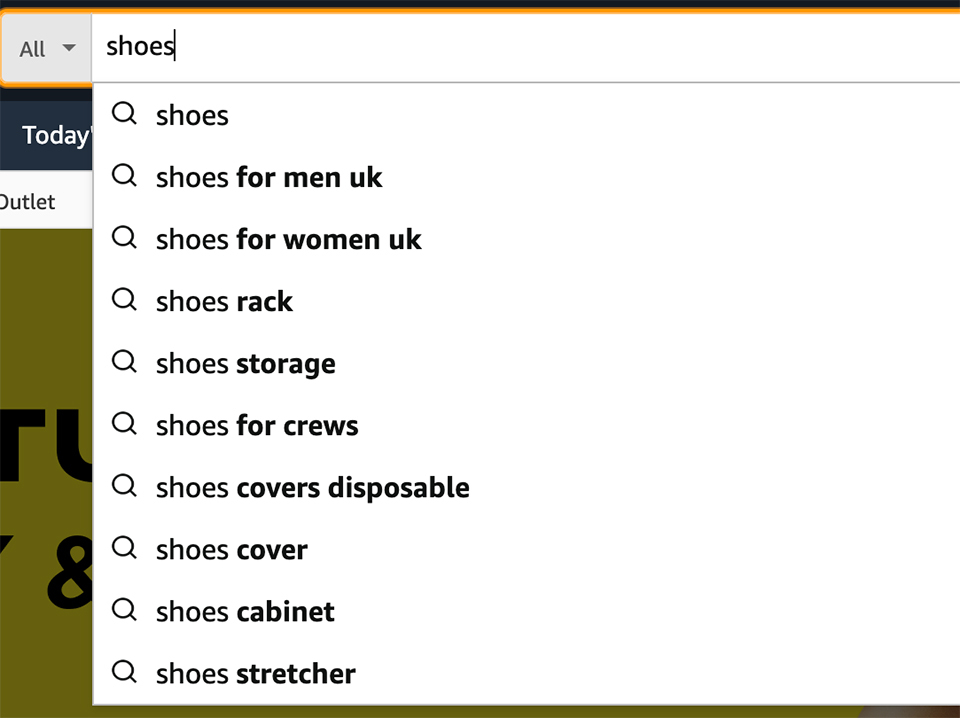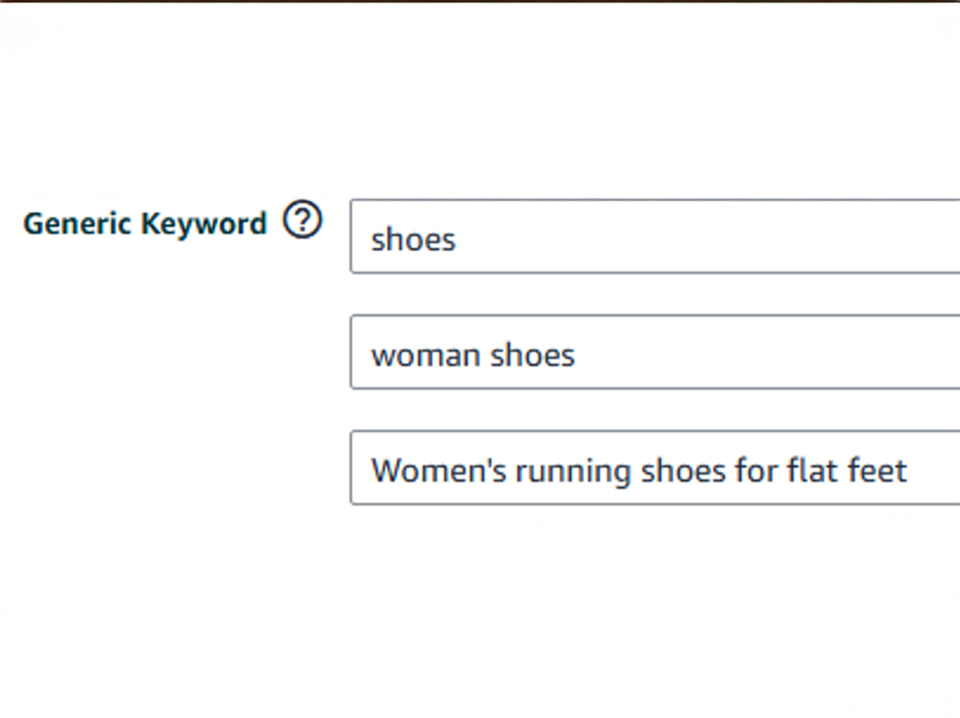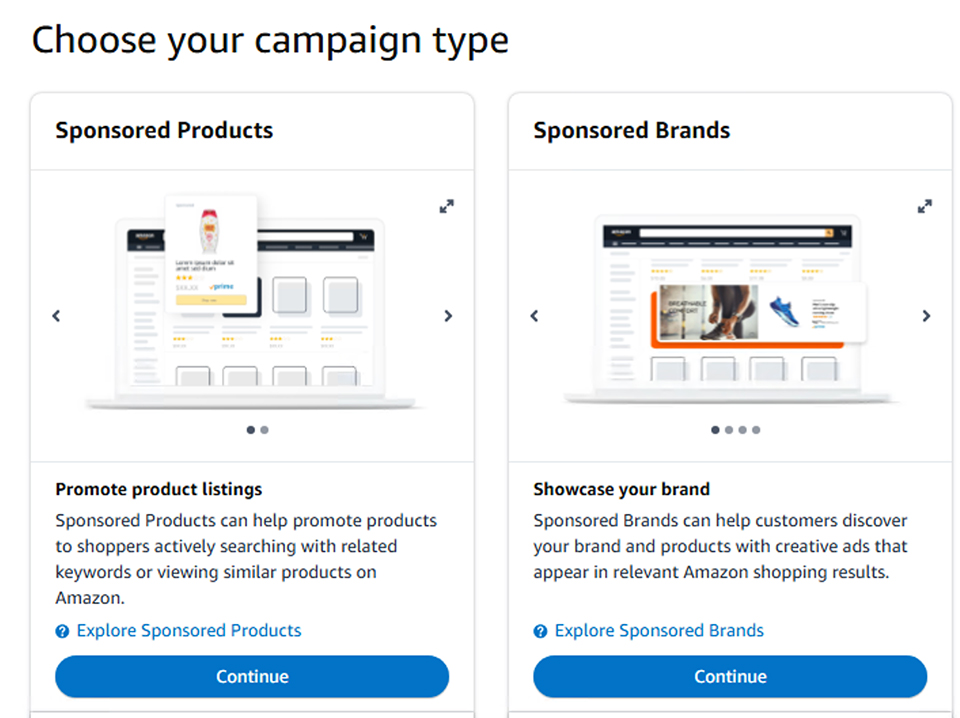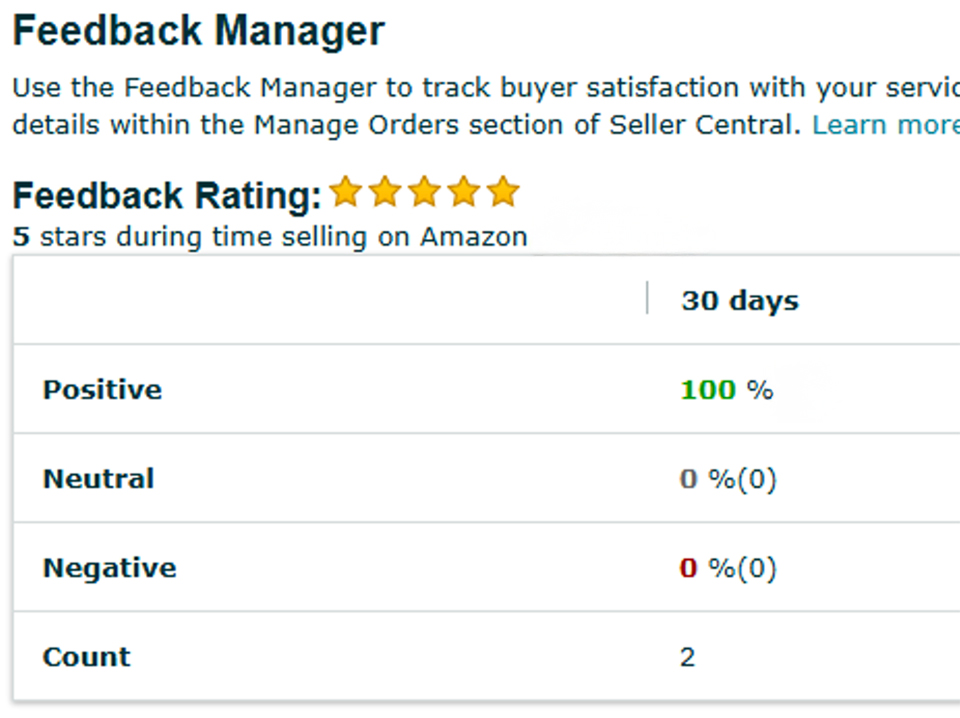Amazon, with over 350 million active users worldwide, is not just an e-commerce platform but also a primary search engine for users with high purchase intent. If you want your products to rank higher and drive more sales, mastering Amazon SEO is essential.
Customers searching for products on Amazon rarely move past the first page. Statistics indicate that 89% of buyers explore only the first-page listings, and 70% never check the second page. This highlights the necessity of optimizing your listings to appear among the top results.
Why is Amazon SEO Important?
1. Intense Competition
Amazon hosts more than 500,000 active product listings in Turkey alone, making visibility a key challenge. Without proper SEO, your product may go unnoticed.
2. Amazon’s Algorithm Sensitivity
Unlike Google, Amazon’s A10 algorithm prioritizes:
Keyword relevance
Sales velocity
Customer satisfaction (reviews, return rates, and engagement metrics)
3. Cost-Effective Strategy
Organic rankings can help lower advertising spend by up to 70%. A product ranking first for “women’s running shoes” can receive 15,000+ organic clicks per month, reducing dependency on paid ads.
Understanding Amazon A9 and A10 Algorithms

Amazon’s product ranking algorithms continuously evolve to provide customers with the most relevant products in the shortest time. Understanding the differences between A9 and A10 can give sellers a crucial competitive advantage. Here are the details:
Key Differences Between Amazon A9 and A10 Algorithms
While A10 is an advanced version of A9, there are four fundamental differences sellers should focus on:
| Feature | A9 Algorithm | A10 Algorithm |
|---|---|---|
| Primary Focus | Sales velocity & keyword matching | Customer experience, brand authority & external traffic |
| External Traffic Influence | Limited (prefers Amazon-only interactions) | High (Google Ads, social media, and external referrals boost ranking by 30%) |
| Customer Metrics | Basic metrics (ratings & reviews) | Advanced analytics (session duration, repeat purchases, and engagement rate) |
| Local Relevance | Global ranking system | Adapts to regional buyer behavior (e.g., prioritizing “fast delivery” preferences) |
Proven Amazon SEO Strategies to Rank Higher
Drive External Traffic
Use Instagram “Buy Now” links to direct traffic to your Amazon listings.
Run Google Ads targeting purchase-intent keywords like “best price [product name]” (e.g., “best price Bluetooth headphones”).
Case Study: A clothing brand leveraged TikTok live streams to generate 2,000+ external clicks per month, moving their ranking from page 3 to page 1.
Maximize Customer Satisfaction
Review Management: Respond professionally to negative reviews within 24 hours (e.g., “Sorry, [name]! We’re sending you a DM to resolve this.”).
Repeat Purchase Rate: Implement loyalty programs to encourage repeat buyers (e.g., “Get 20% off on your third purchase”).
Adapt to User Behavior
Search Habits: Target specific long-tail keywords like “women’s running shoes size 9” instead of just “running shoes.”
Mobile Shopping Optimization:
Keep titles under 60 characters to avoid truncation on mobile.
Upload vertically optimized images (1200×1500 pixels).
Why Are External Traffic and Customer Metrics So Important on Amazon?
The Amazon A10 algorithm considers external traffic a “quality signal.” Why?
- Increased Trust: If your product is popular on Instagram, it also gains credibility on Amazon.
- Competitive Advantage: Most sellers still focus on A9; by optimizing for A10, you stand out.
- Algorithmic Reward: 45% of users who come from external traffic end up purchasing, signaling to A10 that “this listing attracts buyers.”
Amazon Keyword Research Explained: Tips & Techniques

Keyword research is a fundamental pillar of Amazon SEO and one of the most effective ways to reach potential customers searching for your products. Choosing the right keywords helps you stand out in search results and increase sales on Amazon. In this guide, we’ll cover both basic and advanced keyword research techniques to enhance your Amazon listings.
Basic Amazon Keyword Research Techniques
When starting keyword research, Amazon’s built-in tools and competitor analysis provide valuable insights. Here are three of the most effective methods:
1. Using Amazon’s Auto-Complete Feature
Amazon’s search bar auto-complete suggests popular search terms as you type, reflecting the actual queries customers use.
How to Apply?
- Start typing a general keyword related to your product in Amazon’s search bar (e.g., “running shoes”).
- Note the suggested auto-complete keywords that appear.
- Consider integrating these terms into your product title or backend search terms field.
Why is it Important?
- Reflects real user search behavior.
- Free and requires no additional tools.
- Helps discover long-tail keywords (e.g., “women’s running shoes size 9”).
Analyzing Competitor Listings for Keyword Insights
Examining competitor listings helps identify successful keyword strategies in your niche.
What to Analyze?
- Product Titles – What key terms do competitors highlight?
- Bullet Points – How do they describe features and benefits?
- Product Descriptions – What additional keyword variations do they use?
How to Utilize?
- Identify repeating keywords across top competitor listings.
- Adapt these keywords to fit your brand and product and integrate them into your title, description, and backend search terms.
Using Amazon Keyword Research Tools
There are several third-party tools that provide in-depth keyword research data. Some of the most popular tools for Amazon SEO include:
Helium 10
- Features tools like “Cerebro” and “Magnet” for deep keyword analysis.
- Provides search volume, competition level, and trending keyword data.
Jungle Scout
- Combines competitor analysis, keyword discovery, sales estimates, and category insights.
- Ideal for product launches, helping determine the most effective keywords to target.
Using data from these tools, you can optimize your product title, bullet points, description, and backend search terms to increase visibility in Amazon search results.
Advanced Amazon Keyword Research Techniques
Once you’ve mastered the basics, advanced techniques help gain a competitive edge in Amazon SEO. Below, we explore strategies such as long-tail keywords, backend search term optimization, and A/B testing.
Targeting Long-Tail Keywords to Reach Niche Markets
Long-tail keywords are highly specific search phrases that indicate strong purchase intent and typically face lower competition.
Example:
Instead of using the broad term “running shoes”, opt for a more specific long-tail keyword like:
“breathable women’s black running shoes for jogging”
Advantages:
- Lower Competition – Easier to rank for niche terms.
- Higher Conversion Rate – Users with precise searches are more likely to purchase.
- Better Targeting – Helps meet the needs of a specific customer segment.
How to Find Long-Tail Keywords?
- Use Amazon Auto-Complete suggestions.
- Utilize tools like Helium 10 or Jungle Scout to discover search variations.
- Analyze customer reviews and Q&A sections to identify the terms real buyers use.
Optimizing Backend Search Terms for Higher Rankings

Backend search terms aren’t visible in your listing but directly impact rankings on Amazon. Optimizing this section strategically can boost your product’s discoverability.
Key Considerations:
- Character Limit: Amazon enforces a limit on backend search terms. Ensure you stay within the allowed limit.
- Avoid Repetition: Adding the same keyword multiple times doesn’t improve ranking—focus on variations and synonyms instead.
- Relevance is Key: Amazon penalizes irrelevant keywords, so ensure all backend search terms are related to your product.
Strategic Use:
- Use misspellings and alternative spellings (e.g., “Vacum Cleaner” instead of “Vacuum Cleaner”).
- Include foreign language terms relevant to your product’s market.
- Add synonyms and variations that wouldn’t fit naturally in your listing.
A/B Testing Keyword Performance for Better Optimization
A/B testing allows sellers to compare different keyword combinations and determine which one drives better engagement and conversions.
How to Implement?
Create Two Variants
- Version A: “Wireless Headphones, 50-Hour Battery Life”
- Version B: “Bluetooth 5.3 Headphones, Noise Cancelling”
Track Performance
- Measure CTR (Click-Through Rate), Conversion Rate, and Sales over a set period.
- Use Amazon Seller Central’s A/B testing tools or track results via Helium 10.
Apply the Winning Version
- Implement the better-performing title permanently.
Case Study:
A running shoe seller tested two titles:
A: “Lightweight Running Shoes for Men”
B: “Men’s Running Shoes Size 9 – Breathable”
Version B achieved a 25% higher conversion rate, proving that long-tail, size-specific keywords resonated better with buyers.
In conclusion, a comprehensive keyword research process requires a combination of both basic and advanced techniques. By starting with methods such as auto-complete, competitor analysis, and professional tools, and then advancing to long-tail keywords and backend search term optimization, you can establish a much stronger foundation for your Amazon SEO strategy.
Optimizing Amazon Product Listings
To succeed on Amazon, you need to optimize your product listings to the highest possible standard. As one of the most critical steps in your Amazon SEO strategy, this optimization process helps improve search rankings and attract potential buyers. In this section, you’ll learn about the key elements of Amazon product listing optimization and how to increase customer conversions.
Key Elements of Amazon Product Listings
To stand out on Amazon, you must professionally structure key elements such as product titles, descriptions, images, pricing, and A+ Content. Each of these components plays a crucial role in Amazon SEO and directly impacts visibility and sales.
Amazon Product Title Optimization
Creating compelling and SEO-friendly product titles is essential for attracting Amazon shoppers and ranking higher in search results.
Best Practices for Product Titles:
- Strategic Keyword Placement: Include the most important product features and high-volume keywords at the beginning of the title.
- Clear and Concise Wording: Ensure the title is structured, easy to read, and informative, so customers can quickly understand the product.
- Amazon Title Guidelines: Follow Amazon’s character limits, avoid prohibited words, and adhere to formatting rules to prevent penalties or ranking drops.
Example of an Optimized Title:
“Wireless Headphones, 50-Hour Battery Life, Bluetooth 5.3, Noise Cancelling, IPX7 Waterproof”
Writing Effective Bullet Points and Product Descriptions on Amazon
Your Amazon product page should provide detailed and persuasive information to help potential customers make a purchase decision.
Bullet Points (Key Features Section):
- Keep descriptions short and to the point.
- Highlight essential product features and benefits.
- Integrate target keywords naturally to improve Amazon SEO.
Product Description Best Practices:
- Share your brand story or explain product use cases to build trust.
- Use additional keywords to gain an edge in Amazon’s algorithm.
- Address potential customer questions to streamline the decision-making process.
Optimizing Product Images on Amazon
A significant part of the Amazon shopping experience is shaped by visual content. High-quality and informative images are crucial not only for Amazon SEO but also for improving conversion rates.
- High Resolution: Use clear and professional images that meet Amazon’s technical requirements.
- Multiple Angles and Close-Ups: Show the product from different perspectives, close-ups, and in-use scenarios to help customers get a better understanding.
- Informative Visuals: Enhance images with short descriptions, dimensions, or technical details (in an infographic-style format) to make the product more explanatory.
Competitive Pricing Strategies
Price is a key factor considered by Amazon’s algorithm and plays a crucial role in ranking and sales performance.
How to Optimize?
- Market Research: Monitor competitor pricing and promotions to stay competitive.
- Dynamic Pricing: Regularly adjust prices based on sales trends, demand, and stock levels.
- Value-Based Communication: Instead of focusing solely on lower prices, emphasize product quality and additional benefits (such as fast shipping or gift packaging), which can sometimes be more effective.
Using A+ Content and Amazon Store
A+ Content is a premium content feature on Amazon that allows brands to showcase their products using enhanced images, comparison charts, and detailed text descriptions.
Benefits of A+ Content:
- Provides additional space for visuals, graphics, and text, allowing you to tell your product’s story in more depth.
- Builds brand trust and credibility, increasing conversion rates.
- Offers extra text fields that help optimize your Amazon SEO by incorporating relevant keywords.
Amazon Store:
- Allows you to highlight your brand on a dedicated storefront page, organizing all your products into categorized sections.
- Increases brand awareness and sales by directing traffic from advertising campaigns to your Amazon Store page
Mobile Optimization
Mobile usage is becoming an increasingly significant part of the Amazon shopping experience.
How to Optimize?
- Fast Loading Speed: Optimize high-resolution images and structure A+ Content elements in a way that does not slow down the page load time.
- Attention-Grabbing Titles and Images: With limited screen space on mobile, the first few words of your product title and your main image must stand out.
- Easy-to-Read Bullet Points: Long text can be overwhelming for mobile users. Keep bullet points concise and to the point to maintain engagement.
Ranking higher on Amazon requires structuring your product listings with both Amazon SEO and user experience in mind. From product titles to A+ Content, pricing, and image optimization, every detail matters to both Amazon’s search algorithm and potential buyers.
Using Amazon PPC as a Lever for SEO

Succeeding on Amazon is not just about organic SEO efforts. Amazon Advertising is a powerful tool to strengthen your Amazon SEO strategy and increase product visibility. By effectively utilizing ad campaigns, you can improve organic rankings, drive more traffic, and boost sales on Amazon. In this section, we will explain how to leverage Amazon PPC and Amazon DSP and how to direct external traffic to your Amazon listings.
Improving Organic Ranking with Amazon PPC
Amazon PPC (Pay-Per-Click) is a paid advertising model designed to enhance the visibility of your products in Amazon search results and product pages. When managed correctly, PPC campaigns support organic rankings and help you reach a broader customer base.
Sponsored Products and Sponsored Brands
Sponsored Products and Sponsored Brands are the two most commonly used Amazon PPC campaign types. These ad formats help your products appear in higher positions in Amazon search results and on product pages.
Sponsored Products:
- Enhancing Product Visibility: Sponsored Products ads highlight specific products in search results and product detail pages, making it easier for potential customers to discover and click on them.
- Driving More Traffic: Sponsored Products campaigns generate direct traffic to product pages, which supports organic rankings and increases sales on Amazon.
- Flexible Targeting Options: You can customize your ad campaigns with keyword targeting, product targeting, and category targeting strategies.
Sponsored Brands:
- Increasing Brand Awareness: Sponsored Brands ads feature your brand logo, custom headlines, and multiple products in a banner format, allowing you to showcase your entire product range while strengthening brand recognition.
- High Visibility: Sponsored Brands ads typically appear at the top of search results, ensuring that your products are seen by a wider audience.
- Comprehensive Analytics and Reporting: Sponsored Brands campaigns provide detailed performance insights, helping you optimize future advertising strategies.
In conclusion, Sponsored Products and Sponsored Brands campaigns are effective ways to increase product visibility and drive more traffic on Amazon. By managing these ad types correctly, you can enhance your organic rankings and significantly boost your sales.
Programmatic Advertising with Amazon DSP
Amazon DSP (Demand-Side Platform) is Amazon’s programmatic advertising solution, offering advanced targeting and optimization options to reach a broader audience. Amazon DSP allows you to display ads not only on the Amazon platform but also on external websites and applications.
Strategies for Capturing Audiences Outside of Amazon
Amazon DSP provides various strategies to reach your target audience outside of Amazon. These strategies are powerful tools for increasing brand visibility and engaging potential customers.
Advanced Targeting Options
- Demographic Targeting: Target audiences based on demographic factors such as age, gender, and income level.
- Behavioral Targeting: Deliver more relevant ads by targeting users based on their past purchase behavior and interests.
- Retargeting: Re-engage users who have shown interest in your products on Amazon but have not yet completed a purchase, helping to improve conversion rates.
Multi-Channel Campaign Management
- Websites and Mobile Apps: Amazon DSP allows you to display ads on popular websites and mobile applications outside of Amazon, expanding your brand’s reach.
- Video Ads: Showcase video ads on platforms like YouTube and Hulu to enhance brand awareness.
- Display Ads: Use visually appealing display ads to capture the attention of potential customers.
Data Integration and Analysis
- Leveraging Amazon Data: Amazon DSP utilizes Amazon’s extensive data pool to deliver more accurate and effective ads to your target audience.
- Performance Tracking and Optimization: Monitor campaign performance in real time and make necessary optimizations to maximize the efficiency of your advertising budget.
By using Amazon DSP for programmatic advertising, you can capture your target audience across multiple channels and enhance your brand’s visibility. These strategies support your Amazon SEO efforts, improving both organic rankings and sales performance.
Driving External Traffic to Amazon Listings
The success of your Amazon SEO strategy is not limited to optimizations within Amazon. Driving traffic from external sources to your Amazon listings is an effective way to boost visibility and support sales. This section explores strategies for attracting customers to Amazon through social media, email marketing, and other channels.
- Social Media
Social media platforms are powerful tools for reaching large audiences and directing potential customers to your Amazon listings.
- Content Marketing: Share valuable and engaging content related to your products to guide followers to your Amazon pages. Utilize blog posts, videos, and infographics to highlight product benefits.
- Ad Campaigns: Run targeted ad campaigns on platforms like Facebook, Instagram, and Twitter to attract users with specific demographic traits to your Amazon listings.
- Influencer Collaborations: Partner with industry-relevant influencers to leverage their audience and drive traffic to your Amazon product pages. These partnerships offer significant advantages in terms of credibility and reach.
2. Email Marketing
Email marketing is an effective way to communicate directly with customers and guide them to your Amazon listings.
- Newsletters and Promotions: Send regular newsletters featuring new products, discounts, and exclusive deals to drive subscribers to your Amazon pages.
- Personalized Recommendations: Provide personalized product suggestions based on customer purchase history to direct them to relevant Amazon listings.
- Subscription and Loyalty Programs: Encourage repeat purchases by building customer loyalty and increasing Amazon sales.
3. Other Traffic Sources
Beyond social media and email marketing, additional traffic sources can also drive visitors to your Amazon listings.
- Blogs and Websites: Publish blog posts or product guides that link to your Amazon pages, educating readers and driving traffic.
- Affiliate Programs: Utilize affiliate marketing to have website owners and bloggers promote your products, generating more referral traffic.
- Online Forums and Communities: Engage in platforms like Reddit and Quora, answering questions related to your products and naturally directing users to your Amazon pages.
Driving external traffic to your Amazon listings is a powerful way to enhance visibility and boost sales. By implementing these strategies effectively, you can strengthen your overall Amazon SEO approach and improve performance.
Discover in-depth insights into Amazon advertising by exploring our comprehensive guide: “Mastering Amazon PPC: From Basics to Advanced Strategies”
Managing Customer Engagement on Amazon

One of the key factors for success on Amazon is effectively engaging with customers. Managing customer interactions is crucial for improving your Amazon SEO performance and building brand loyalty. This section will cover effective strategies for handling customer reviews, feedback, and the Q&A section.
Amazon Customer Reviews and Feedback
Customer reviews and feedback directly impact the perception and ranking of your products on Amazon. Positive reviews help gain customer trust, while negative reviews can harm your brand image. Therefore, it is essential to implement the right strategies for both scenarios.
Strategies for Gaining Positive Reviews on Amazon
Positive reviews reflect product quality and customer satisfaction. Here are strategies to increase the number of positive reviews on Amazon:
Enhance Product Quality:
- Offer high-quality products that exceed customer expectations.
- For example, improving the durability of your product can ensure long-term satisfaction.
Improve Customer Service:
- Resolve issues quickly and effectively.
- Provide 24/7 support to gain customer trust.
Optimize the Purchase Experience:
- Offer fast shipping, high-quality packaging, and clear product information.
- A seamless experience encourages customers to leave positive feedback.
Send Follow-Up Emails:
- Politely request feedback from customers after purchase.
- Thank customers for positive reviews and encourage them to leave additional feedback.
Provide Incentives (Within Amazon’s Guidelines):
- Offer discount coupons or future purchase benefits to customers who leave reviews.
- Ensure compliance with Amazon’s review policies to avoid violations.
Handling Negative Reviews Effectively on Amazon
Negative reviews highlight customer issues and product shortcomings. Managing them correctly is key to maintaining brand reputation and customer satisfaction.
Respond Quickly and Professionally:
- Address negative reviews as soon as possible.
- Show that you acknowledge the issue and are working on a resolution.
Offer Solutions:
- Provide options such as returns, exchanges, or discounts to improve customer satisfaction.
- For example, suggest: “Please contact us for a replacement or refund.”
View Negative Feedback as a Learning Opportunity:
- Use feedback to improve your products and services.
- For instance, if a specific issue is frequently mentioned, consider fixing it in your product.
Turn Negative Reviews into Positive Experiences:
- Go the extra mile to resolve customer concerns.
- A successful resolution may lead customers to update their reviews positively.
Encourage Positive Reviews:
- Balance out negative feedback by encouraging satisfied customers to leave reviews.
- This helps improve your overall rating.
Engaging in the Amazon Customer Q&A Section
The Q&A section on Amazon is crucial for potential buyers to gather information and clarify doubts about your product. Being active in this section helps build customer trust and increase sales.
Effective Strategies for Amazon’s Q&A Section
Respond Quickly and Clearly:
- Answer customer questions as soon as possible.
- Fast responses enhance customer satisfaction and positively impact sales.
Provide Detailed Information:
- Go beyond a simple answer and add useful details.
- For example: “The technical specifications of this product are…”
Maintain a Professional and Polite Tone:
- Always use a respectful and professional tone in your responses.
- Ensure a helpful and friendly approach.
Prevent Repetitive Questions:
- If you notice frequently asked questions, update your product descriptions or Q&A section to address them.
- This reduces the likelihood of customers repeatedly asking the same questions.
Comply with Amazon’s Privacy Policies:
- Protect customer privacy when answering questions.
- Be cautious when responding to inquiries involving personal information.
Highlight Positive Feedback:
- Use the Q&A section to emphasize positive customer experiences.
- This helps potential buyers build confidence in your product.
Managing customer engagement on Amazon is essential for improving Amazon SEO performance and ensuring customer satisfaction. By actively participating in customer reviews, feedback, and Q&A sections, you can strengthen your brand reputation and significantly boost sales.
Monitoring and Improving Amazon Performance

Sustaining success on Amazon requires continuous performance monitoring and optimization. Evaluating the effectiveness of your Amazon SEO strategy and making necessary adjustments is essential for staying ahead of the competition. This section focuses on analyzing competitor strategies, benchmarking pricing and keywords, and tracking listing performance. Additionally, we will explore key tools and methods to support this process.
Analyzing Competitor Strategies on Amazon
Understanding competitor strategies on Amazon is crucial for improving your own Amazon SEO performance. Competitive analysis provides valuable insights to expand market share, refine pricing strategies, and enhance keyword research.
Essential Tools for Amazon Competitor Analysis
Effective competitor analysis requires leveraging various tools to understand market dynamics and strengthen your position on Amazon. Here are some essential tools for analyzing market share, pricing, and keyword research:
Helium 10:
- Xray: Analyzes competitor sales data and keyword strategies.
- Cerebro: Helps discover the keywords competitors are using on Amazon.
Jungle Scout:
- Keyword Scout: Identifies and analyzes competitors’ keywords.
- Product Tracker: Monitors competitor product sales performance and pricing trends.
AMZScout:
- Pro Extension: Provides data on competitor sales volume, pricing strategies, and stock levels.
Keepa:
- Price Tracking: Monitors competitor price changes and stock status.
Sellics:
- Competitor Tracking: Offers a detailed analysis of competitor performance and strategies.
These tools help you gain insights into competitor strategies and refine your own approach. By identifying strengths and weaknesses, you can position yourself more competitively in the marketplace.
Benchmarking Pricing and Keywords on Amazon
Comparing your pricing and keyword strategies with competitors allows you to optimize your approach and strengthen your market position. This process is essential for maintaining a competitive edge and increasing sales.
Pricing Benchmarking
- Competitor Price Analysis: Check if competitor products are within similar price ranges as yours.
- Value-Based Pricing: Set pricing strategies based on the value your products provide.
- Dynamic Pricing: Adjust prices flexibly according to market conditions and competitor movements.
Keyword Benchmarking
- Keyword Density: Analyze how well your keywords align with those used by competitors.
- New Keyword Discovery: Identify keywords competitors are using that you haven’t incorporated yet and integrate them into your strategy.
- Keyword Performance Tracking: Monitor which keywords drive better performance for competitors and develop similar strategies.
By conducting benchmarking, you can identify gaps in your pricing and keyword strategies, make necessary improvements, and enhance your competitive advantage on Amazon.
Tracking and Improving Amazon Listing Performance
Consistently monitoring and optimizing your product listings is crucial for Amazon SEO success. This process allows you to make data-driven decisions and improve your listings for better performance.
Using Amazon Seller Central
Amazon Seller Central is the primary platform for tracking and optimizing your product performance. Utilizing Seller Central effectively can help you enhance your Amazon performance.
- Performance Reports: Monitor key metrics such as sales volume, conversion rates, and click-through rates.
- Inventory Management: Track stock levels to avoid running out of stock and missing sales opportunities.
- Order Management: Efficiently handle orders to ensure smooth and timely deliveries.
- Customer Feedback: Analyze reviews and feedback to improve product and service quality.
- Ad Performance Tracking: Monitor and optimize the effectiveness of Amazon advertising campaigns.
Seller Central provides a centralized view of all essential performance data, enabling you to analyze and optimize your listings efficiently.
Leveraging Third-Party Analytics Tools
Beyond Seller Central, third-party analytics tools offer deeper insights into Amazon SEO performance and optimization strategies. These tools help track advanced metrics and make informed improvements.
Helium 10:
- Keyword Tracker: Tracks keyword rankings and monitors performance changes.
- Profits: Analyzes revenue, profit margins, and other financial metrics.
Jungle Scout:
- Sales Analytics: Evaluates sales data to identify top-performing products.
- Product Tracker: Provides real-time insights into product and competitor sales performance.
Sellics:
- SEO Module: Assesses listing SEO performance and provides optimization suggestions.
- Review Manager: Monitors customer reviews and helps refine review management strategies.
AMZScout:
- Pro Extension: Tracks competitor analysis and market trends for strategic decision-making.
Keepa:
- Price Tracker: Monitors price fluctuations and stock availability to optimize pricing strategies.
These third-party tools provide comprehensive insights into your Amazon performance, helping you optimize listings and drive sustainable growth.
The success of your Amazon SEO strategy is directly linked to continuous performance monitoring and improvement. Regularly analyzing competitor strategies, benchmarking pricing and keywords, and tracking listing performance will help strengthen your position on Amazon and increase sales. Utilizing the right tools and strategies in this process provides a significant advantage in staying competitive in the Amazon marketplace.
Compliance and Staying Updated on Amazon

Sustaining success on Amazon requires strict adherence to platform policies and staying informed about ongoing updates. The effectiveness of your Amazon SEO strategy depends not only on optimization but also on compliance with Amazon’s policies and your ability to stay current. This section focuses on adapting to Amazon policy changes and avoiding common Amazon SEO mistakes.
Adapting to Amazon Policy Changes
Amazon regularly updates its policies to enhance the platform and improve customer experience. Staying compliant with these changes is crucial for maintaining account health and avoiding potential penalties.
Keeping Account Health and Avoiding Penalties by Tracking Updates
Monitoring Amazon’s policy changes and acting accordingly helps protect your account and prevent any penalties.
- Amazon Seller Central Announcements: Regularly check updates and important notifications on Seller Central, where Amazon publishes new policies and critical changes.
- Training and Webinars: Participate in Amazon-led training sessions and webinars to stay informed about policy updates and implementation guidelines.
- Professional Consultation: Work with an Amazon-experienced consultant or agency to ensure a smooth transition and compliance with new regulations.
- Content Updates: Review product listings and keywords to align with Amazon’s updated policies. Be mindful of restricted words, inappropriate descriptions, or miscategorized products.
- Legal Compliance: In addition to Amazon’s policies, ensure adherence to local legal requirements regarding product safety, labeling, and data protection to maintain account integrity.
By closely monitoring Amazon’s policies and quickly adapting to changes, you can ensure long-term success in your Amazon SEO strategy while maintaining compliance and uninterrupted sales.
Avoiding Common Amazon SEO Mistakes
Mistakes in Amazon SEO can negatively impact rankings and reduce sales. Avoiding these errors is crucial for success on the platform. Implementing the right strategies in line with Amazon’s algorithms and policies helps minimize risks and maintain strong rankings.
- Keyword-Stuffed Titles: Overloading titles with excessive keywords can lead to penalties. Optimize product titles with clear and relevant descriptions.
- Incorrect Categorization: Placing products in the wrong category affects user experience and rankings. Select accurate categories and subcategories.
- Low-Quality Content: Poorly written, repetitive, or irrelevant product descriptions and bullet points can hurt Amazon SEO performance. Ensure content is original, informative, and customer-focused.
- Low-Resolution Images: Poor-quality images that do not properly showcase the product can lower conversion rates and rankings. Use high-resolution, professional images.
- High Return Rates and Poor Customer Service: Frequent returns and negative customer experiences negatively impact Amazon’s algorithms. Prioritize customer satisfaction to minimize these issues.
- Misuse of Backend Search Terms: Overstuffing backend search terms or including irrelevant keywords can result in penalties. Use strategic and relevant keywords instead.
- Fixed Pricing Strategy: Ignoring competitor pricing and maintaining a static price can reduce competitiveness and sales. Implement dynamic pricing strategies to stay competitive.
- Policy Violations: Regularly check Amazon’s restricted products list and avoid listing prohibited items. Also, be cautious of copyright infringements and misleading information.
Avoiding these common Amazon SEO mistakes helps maintain strong rankings and drive higher sales. By carefully implementing and refining your strategies, you can achieve long-term success on Amazon.
Success on Amazon requires proper execution of SEO strategies, continuous optimization, and adaptability to platform changes. The topics covered in this guide provide essential insights to enhance your Amazon SEO performance and maximize sales. By staying compliant and proactive, you can maintain a competitive edge and achieve sustainable growth on Amazon.
Fundamental Rules for Amazon SEO Success
This guide summarizes the key points you need to consider for achieving success in Amazon SEO:
- Keyword Research: Identify the right keywords and strategically place them in your listings to increase visibility.
- Product Listing Optimization: Optimize key elements such as titles, descriptions, images, and pricing to improve conversion rates.
- Utilizing Amazon Advertising: Leverage Amazon PPC and Amazon DSP to enhance visibility and drive traffic.
- Managing Customer Engagement: Stay active in reviews and Q&A sections, encourage positive feedback, and handle negative reviews professionally.
- Performance Monitoring and Improvement: Conduct competitor analysis, benchmark pricing and keywords, and optimize your strategies accordingly.
- Compliance and Staying Updated: Keep track of Amazon’s policies and quickly adapt to any changes.
- Avoiding Common Mistakes: Implement best practices and steer clear of common SEO errors when developing your strategy.
These insights will guide you in developing and executing an effective Amazon SEO strategy for long-term success.
Next Steps for Optimizing Your Amazon Product Listings
After implementing your Amazon SEO strategies, it is essential to continuously optimize and improve them. Here are the next steps to achieve long-term success on Amazon:
- Strategy Analysis and Updates: Regularly review your existing strategies and make updates based on performance insights. Identify what is working and what needs improvement.
- Discovering New Keywords: Keep up with market trends and integrate new, high-performing keywords into your product listings.
- Enhancing A+ Content and Amazon Store: Regularly update and improve your A+ Content and Amazon Store to showcase your brand and products more effectively.
- Strengthening Customer Relationships: Engage more with customers to build a loyal customer base. Actively respond to reviews and questions in the Q&A section.
- Optimizing Ad Campaigns: Continuously monitor and optimize your Amazon PPC and Amazon DSP campaigns. Allocate your budget efficiently and refine targeting strategies.
- Utilizing Third-Party Tools: Use advanced analytics tools like Helium 10 and Jungle Scout to gain deeper insights into your performance.
- Evaluating Customer Feedback: Regularly analyze customer feedback and make product improvements based on their insights.
- Continuous Learning and Updates: Stay informed about the latest Amazon updates and SEO trends by participating in training sessions and following industry news.
- Stock Management and Logistics: Optimize inventory levels and logistics processes to avoid missed sales opportunities.
- Leveraging Performance Reports: Use performance data from Amazon Seller Central and third-party analytics tools to refine your strategies for better results.
Optimizing and continuously improving your Amazon SEO strategies is the key to long-term success on the platform. By following these steps, you can stay ahead of the competition and sustainably increase your sales. Remember, Amazon SEO is a dynamic process that requires ongoing effort and adaptability.
Additional Resources and Tips for Success on Amazon
- Amazon Seller Central Training Materials: Utilize Amazon’s official educational resources to better understand the platform.
- SEO and Digital Marketing Blogs: Stay updated with the latest SEO insights from leading blogs like Neil Patel, Moz, and Ahrefs.
- Webinars and Online Courses: Enroll in Amazon SEO courses on platforms like Udemy and Coursera.
- Professional Amazon Consultants: Work with experienced consultants to refine and implement your strategies effectively.
These resources will help you enhance your Amazon SEO strategies and achieve success on the platform.
At YOUSION Amazon Consulting, we are here to help you maximize your Amazon sales! Our expert team will implement the most effective Amazon SEO strategies to boost your sales. Contact us today and secure your success!





